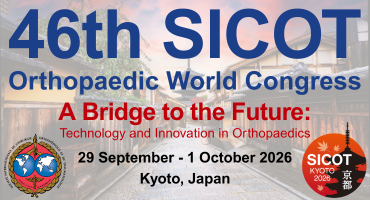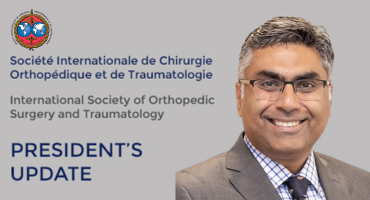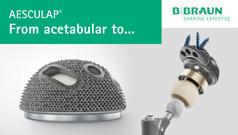Paediatrics
SICOT Associate Member & SICOT Newsletter Editorial Board Member
Questions
Risk factors for Developmental Dysplasia of the Hip (DDH) include all of the following except:
Breech positioning
Male sex
Positive family history
Being first-born child
Decreased intrauterine space
In newborns and infants up to 6 months of age diagnosed with developmental dysplasia of the hip, which of the following treatment options is most appropriate?
Application of a Pavlik Harness
Closed reduction and application of a Pavlik Harness
Closed reduction and application of a hip spica
Open reduction
Open reduction and application of a Pavlik Harness
What is the major risk associated with both open and closed reductions in developmental dysplasia of the hip?
Vascular injury
Nerve injury
Pain
Stiffness
Infection
Which zone of the growth plate is affected in Achondroplasia?
Zone of Maturation
Zone of Provisional Calcification
Reserve Zone
Hypertrophic Zone
Proliferative Zone
Which zone of the growth plate is affected in Ricketts?
Zone of Maturation
Zone of Provisional Calcification
Reserve Zone
Zone of Degeneration
Proliferative Zone
Which zone of the growth plate is affected in Acute Haematogenous Osteomyelitis?
Primary Spongiosa
Hypertrophic Zone
Reserve Zone
Secondary Spongiosa
Proliferative Zone
The Centre Edge Angle (CEA) of Wiberg measurement is useful for the assessment of which condition?
Slipped upper femoral epiphysis
Perthes disease
Developmental dysplasia of the hip
Adolescent idiopathic scoliosis
Supracondylar fracture of the humerus
Which of the following congenital hand anomalies requires removal of supernumerary digits and is commonly called mirror hand?
Triphalangeal thumb
Ulnar dimelia
Apert syndrome
Postaxial polydactyly
Camptodactyly
Which of the following congenital hand anomalies requires removal of supernumerary digits, rarely occurs as a solitary deformity, and is usually associated with complex syndactyly?
Central polydactyly
Bifid thumb
Clinodactyly
Preaxial polydactyly
Congenital ring syndrome
Which of the following congenital hand anomalies require removal of supernumerary digits and is further subdivided into 3 groups according to Stelling and Turek Classification?
Ulnar dimelia
Apert syndrome
Postaxial polydactyly
Camptodactyly
Bifid thumb
Answers
b
Discussion: Decreased intrauterine space explains the increased incidence of DDH in the first-born child. Female sex, breech positioning and positive family history are all associated with an increased risk of developing DDH.
Reference: Campbell’s Operative Orthopaedics
b
Discussion: In this group of patients the treatment of choice would be closed reduction and application of Pavlik Harness. Follow-up with either X-rays or U/S is required to assess effectiveness of treatment.
Reference: Children’s Orthopaedics and Fractures, Michael Benson, John Fixsen, Malcolm Macnicol, Klaus Parsch
a
Discussion: This is due to vascular injury or impingement of the posterosuperior retinacular branch of the medial femoral circumflex artery versus disruption of circulation from osteotomies.
Reference: Children’s Orthopaedics and Fractures, Michael Benson, John Fixsen, Malcolm Macnicol, Klaus Parsch
e
Discussion: Proliferative Zone leads to a deficiency of cell proliferation and is affected in achondroplasia.
Reference: Review of Orthopaedics, Miller
b
Discussion: This is related to deficiency of Calcium and or PTH leading to abnormal calcification of the matrix.
Reference: Review of Orthopaedics, Miller
a
Discussion: Bacteria settle in the slow moving, poorly oxygenated blood in the terminal branches of the metaphyseal arteries.
Reference: Review of Orthopaedics, Miller
c
Discussion: CEA, acetabular angle, Hilgenreiner, Perkin and Shenton’s lines are all used for assessment of DDH.
Reference: Review of Orthopaedics, Miller
b
Discussion: Ulnar dimelia, commonly called mirror hand, refers to radial and ulnar clusters of fingers in the same hand that are near-mirror images of each other. It is considered a duplication phenomenon of the ulnar half of the forearm, wrist, and hand, but because there is complete substitution of the radial components as well, this anomaly is not so easily classified as pure duplication. It is an exceedingly rare anomaly, with few reports in the literature. The largest reported series is that of Harrison, Pearson, and Roaf, in which they describe the deformity in three patients. The cause is unknown, but its occurrence usually is sporadic.
Reference: Campbell’s Operative Orthopaedics
a
Discussion: Central polydactyly refers to duplication of the index, long, or ring finger. It rarely occurs as a solitary deformity and usually is associated with complex syndactyly. The most typical pattern is type 2 central polydactyly concealed within a syndactyly between the long and ring fingers. Polydactyly of the index finger and polysyndactyly of the long and ring fingers probably are inherited as autosomal dominant traits. Associated anomalies include polydactyly and syndactyly of the toes.
Reference: Campbell’s Operative Orthopaedics
c
Discussion: Postaxial polydactyly is the most common type of polydactyly. Stelling and Turek classified postaxial polydactyly into three types based on the degree of duplication: type 1, duplication of soft parts only; type 2, partial duplication of the digit, including the osseous structures; and type 3, complete duplication of the ray, including the metacarpal. Type 3 duplication is rare.
Reference: Campbell’s Operative Orthopaedics

















